- Art.Salon
- Artists
- Alfred William Finch
- Le Faubourg sous la neige ou Scène de rue en hiver
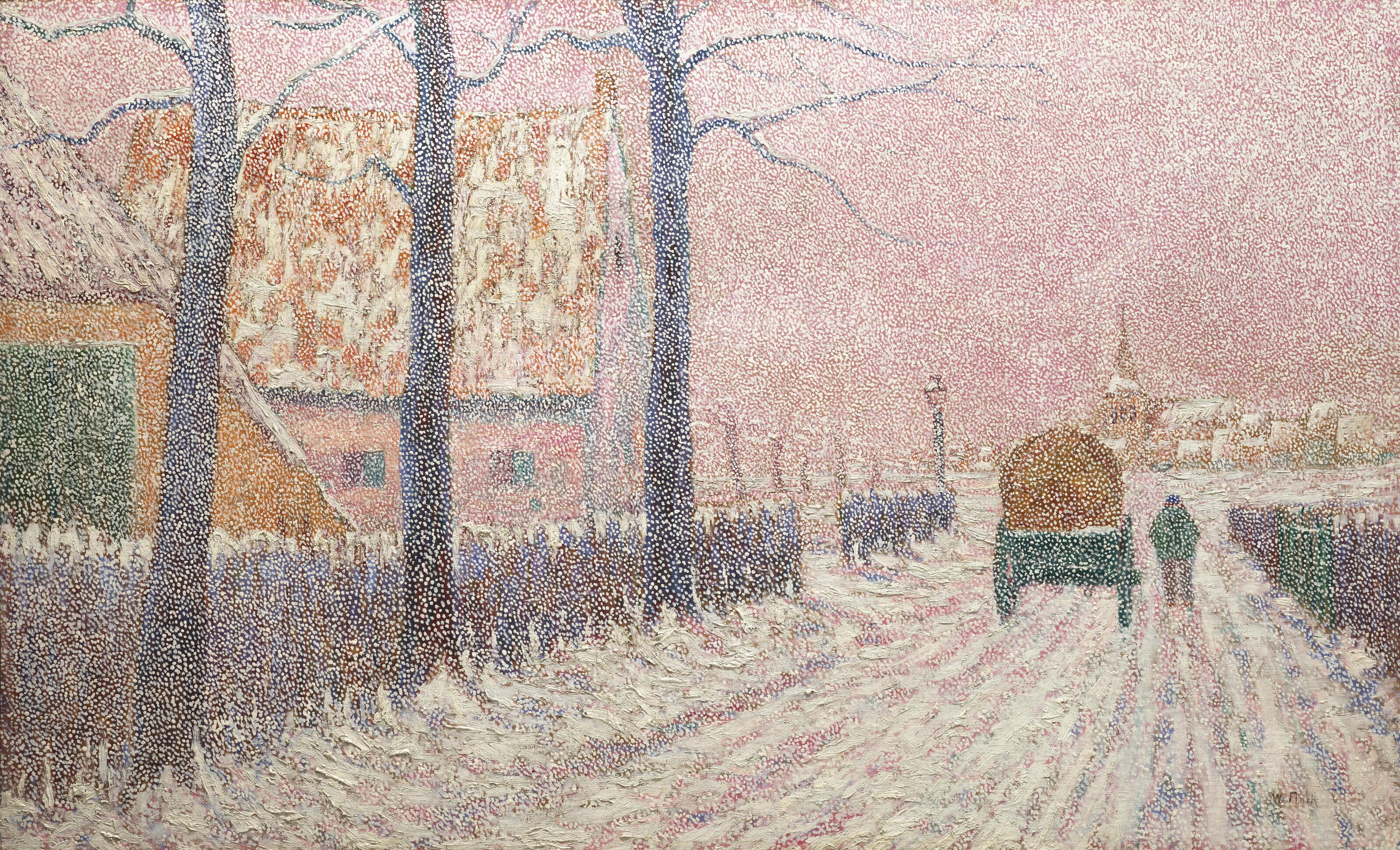
Alfred William Finch
Le Faubourg sous la neige ou Scène de rue en hiver
Found at
Christies,
Paris
La Collection Sam Josefowitz: Vente du jour, Lot 432
21. Oct - 21. Oct 2023
La Collection Sam Josefowitz: Vente du jour, Lot 432
21. Oct - 21. Oct 2023
Estimate: XX.XXX
Price realised: XX.XXX
Price realised: XX.XXX
Description
Né en Belgique de parents anglais, Alfred William Finch, appelé «Willy», étudie à l’Académie des Beaux-Arts de Bruxelles, de 1878 à 1880 en même temps que James Ensor. Tous deux figurent parmi les membres fondateurs du fameux cercle artistique Les XX, en 1883. C’est lors des expositions des XX que Finch rencontrera Seurat et Pissarro, maitres incontestés du pointillisme. En février 1887, Seurat expose à Bruxelles son Après-midi à la Grande Jatte, qui fera sensation. Cette toile marquera Finch, qui, dès l’hiver 1887, se tourne vers la technique pointilliste. Bien que longtemps datée de 1888-89 et considérée comme une œuvre pointilliste, la présente œuvre serait plutôt à dater de 1886, avant même que Finch n’ai vu l’œuvre de Seurat. En effet, la signature ainsi que la touche longue et filamenteuse sont davantage caractéristiques de cette période de l’œuvre de Finch. Ce Faubourg sous la neige n’est donc pas, comme l’on pourrait le croire de prime abord, une œuvre pointilliste ou divisionniste. «En effet, le pointillé apparent représente, non pas des touches juxtaposées destinées à produire la couleur par mélange optique, mais tout simplement des flocons de neige. Cette technique minutieuse n’enlève à cette œuvre aucune de ses qualités esthétiques, et lui confère même une réelle originalité» (Alfred William Finch, cat. exp., Musée de l'Ateneum, Helsinki et Musées royaux des Beaux-Arts de Belgique, Bruxelles, 1991-92, p. 169). Ce sujet en particulier (une vue du village de Lombardsijde, en Flandres, d’après Georges Devant, historiographe de la côte belge, accompagnée d’un «traamkar», charrette bâchée à grandes roues typique de la région) est justement un prétexte pour l’artiste qui souhaitait s’essayer à la touche pointilliste «qu’il n’avait pu observer de près mais dont Verhaeren ou Van Rysselberghe l’avaient certainement entretenu. Ainsi, ce paysage est certainement une toil
(E. Amiot-Saulnier, in Le Néo-Impressionnisme de Seurat à Paul Klee, cat. exp., Musée d’Orsay, Paris, 2005, p. 282).
Peu après la réalisation de cette toile, et après la révélation visuelle de l’exposition de la Grande Jatte au XX, Finch écrivit, dans une lettre à Signac datée de 1887: «J'ai été profondément remué par les toiles de M.M. Seurat et Pissarro, qui étaient aux XX. Je viens vous prier de m'indiquer un livre qui traite de la décomposition des couleurs… Pensez-vous que ce livre me sera utile? Il y a beaucoup de choses que je vois en nature, mais je ne m'explique pas. Je n'aime pas à tâtonner, le point de départ me manque, c'est à dire le côté scientifique." Finch, qui se passionne dès lors pour le mélange optique des couleurs, rend d’ailleurs hommage au peintre français trop tôt disparu dans un article intitulé «Georges Seurat et la technique néo-impressionniste», paru en 1902 à Helsinki dans la revue Euterpe.
Born in Belgium to English parents, Alfred William Finch, known as 'Willy', studied at the Academy of Fine Arts in Brussels from 1878 to 1880 at the same time as James Ensor. Both were among the founding members of the famous XX artistic circle in 1883. It was at the XX exhibitions that Finch met Seurat and Pissarro, the undisputed masters of pointillism. In February 1887, Seurat exhibited his Après-midi à la Grande Jatte in Brussels, which caused a sensation. This painting made its mark on Finch, who turned to the pointillist technique in the winter of 1887.
Although long dated to 1888-89 and considered to be a pointillist work influenced by Seurat, the present work is more likely to date from 1886, before Finch had even seen Seurat's work. Indeed, the signature and the long, filamentous brushstrokes are more characteristic of this period in Finch's work. This Faubourg sous la neige is not, therefore, as one might think at first glance, a pointillist or divisionist work. "Indeed, the apparent stippling does not represent juxtaposed dabs intended to produce colour by optical blending, but quite simply snowflakes. This meticulous technique does not detract from the work's aesthetic qualities, and in fact, gives it real originality." (Alfred William Finch, exh. cat., Atheneum Museum, Helsinki and Royal Museums of Fine Arts of Belgium, Brussels, 1991-92, p. 169). This particular subject (a view of the village of Lombardsijde in Flanders, according to Georges Devant, a historiographer of the Belgian coast, accompanied by a 'traamkar', a covered cart with large wheels typical of the region) was precisely a pretext for the artist, who wanted to try his hand at the pointillist technique "that he had not been able to observe up close but which he had probably heard about from Verhaeren or Van Rysselberghe. So this landscape is clearly a neo-impressionist painting conceived by an artist who loved Seurat even before he discovered his work and whom he immediately placed in the pantheon of great artists." (E. Amiot-Saulnier, in Le Néo- Impressionnisme de Seurat à Paul Klee, exh. cat., Musée d'Orsay, Paris, 2005, p. 282).
Shortly after the completion of this painting, and after the visual revelation of the Grande Jatte exhibition at the XX, Finch wrote, in a letter to Signac dated 1887: "I was deeply moved by the paintings of Mrs Seurat and Pissarro, which were at the XX. I would like to ask you to recommend a book on how colours are broken down… Do you think such a book would be useful to me? I see a lot of things in nature, but I can't explain them to myself. I don't like groping around in the dark; I need a starting point, that being the scientific side.” Finch, who from then on was fascinated by the optical mixing of colours, went on to pay tribute to the French painter who had died too young in an article entitled 'Georges Seurat and the Neo-Impressionist Technique', published in Helsinki in 1902 in the journal Euterpe.
- Monica et Hugo Perls, New York; vente, Sotheby's, New York, 22 juin 1983, lot 12. | Walter F. Brown, Texas. | Sam Josefowitz, Pully (acquis auprès de celui-ci en 1988). | Puis par descendance aux propriétaires actuels.
(E. Amiot-Saulnier, in Le Néo-Impressionnisme de Seurat à Paul Klee, cat. exp., Musée d’Orsay, Paris, 2005, p. 282).
Peu après la réalisation de cette toile, et après la révélation visuelle de l’exposition de la Grande Jatte au XX, Finch écrivit, dans une lettre à Signac datée de 1887: «J'ai été profondément remué par les toiles de M.M. Seurat et Pissarro, qui étaient aux XX. Je viens vous prier de m'indiquer un livre qui traite de la décomposition des couleurs… Pensez-vous que ce livre me sera utile? Il y a beaucoup de choses que je vois en nature, mais je ne m'explique pas. Je n'aime pas à tâtonner, le point de départ me manque, c'est à dire le côté scientifique." Finch, qui se passionne dès lors pour le mélange optique des couleurs, rend d’ailleurs hommage au peintre français trop tôt disparu dans un article intitulé «Georges Seurat et la technique néo-impressionniste», paru en 1902 à Helsinki dans la revue Euterpe.
Born in Belgium to English parents, Alfred William Finch, known as 'Willy', studied at the Academy of Fine Arts in Brussels from 1878 to 1880 at the same time as James Ensor. Both were among the founding members of the famous XX artistic circle in 1883. It was at the XX exhibitions that Finch met Seurat and Pissarro, the undisputed masters of pointillism. In February 1887, Seurat exhibited his Après-midi à la Grande Jatte in Brussels, which caused a sensation. This painting made its mark on Finch, who turned to the pointillist technique in the winter of 1887.
Although long dated to 1888-89 and considered to be a pointillist work influenced by Seurat, the present work is more likely to date from 1886, before Finch had even seen Seurat's work. Indeed, the signature and the long, filamentous brushstrokes are more characteristic of this period in Finch's work. This Faubourg sous la neige is not, therefore, as one might think at first glance, a pointillist or divisionist work. "Indeed, the apparent stippling does not represent juxtaposed dabs intended to produce colour by optical blending, but quite simply snowflakes. This meticulous technique does not detract from the work's aesthetic qualities, and in fact, gives it real originality." (Alfred William Finch, exh. cat., Atheneum Museum, Helsinki and Royal Museums of Fine Arts of Belgium, Brussels, 1991-92, p. 169). This particular subject (a view of the village of Lombardsijde in Flanders, according to Georges Devant, a historiographer of the Belgian coast, accompanied by a 'traamkar', a covered cart with large wheels typical of the region) was precisely a pretext for the artist, who wanted to try his hand at the pointillist technique "that he had not been able to observe up close but which he had probably heard about from Verhaeren or Van Rysselberghe. So this landscape is clearly a neo-impressionist painting conceived by an artist who loved Seurat even before he discovered his work and whom he immediately placed in the pantheon of great artists." (E. Amiot-Saulnier, in Le Néo- Impressionnisme de Seurat à Paul Klee, exh. cat., Musée d'Orsay, Paris, 2005, p. 282).
Shortly after the completion of this painting, and after the visual revelation of the Grande Jatte exhibition at the XX, Finch wrote, in a letter to Signac dated 1887: "I was deeply moved by the paintings of Mrs Seurat and Pissarro, which were at the XX. I would like to ask you to recommend a book on how colours are broken down… Do you think such a book would be useful to me? I see a lot of things in nature, but I can't explain them to myself. I don't like groping around in the dark; I need a starting point, that being the scientific side.” Finch, who from then on was fascinated by the optical mixing of colours, went on to pay tribute to the French painter who had died too young in an article entitled 'Georges Seurat and the Neo-Impressionist Technique', published in Helsinki in 1902 in the journal Euterpe.
- Monica et Hugo Perls, New York; vente, Sotheby's, New York, 22 juin 1983, lot 12. | Walter F. Brown, Texas. | Sam Josefowitz, Pully (acquis auprès de celui-ci en 1988). | Puis par descendance aux propriétaires actuels.
Despite a disappointment, a good price for Alfred William Finch
This work of art by Alfred William Finch could be acquired at Christies in Paris in October this year for an unexpectedly low price. In the La Collection Sam Josefowitz: Vente du jour auction, the work Le Faubourg sous la neige ou Scène de rue en hiver changed hands for EUR 113,400.00 - missing the lower end of the estimate range of EUR 120,000.00 – 180,000.00. Despite this disappointing result, Le Faubourg sous la neige ou Scène de rue en hiver is the most expensive artwork by Alfred William Finch that we have observed at auction so far.
Trotz Enttäuschung ein guter Preis für Alfred William Finch
Dieses Kunstwerk von Alfred William Finch konnte im Oktober diesen Jahres bei Christies in Paris für einen unerwartet niedrigen Preis ersteigert werden. In der Auktion La Collection Sam Josefowitz: Vente du jour wechselte die Arbeit Le Faubourg sous la neige ou Scène de rue en hiver für EUR 113.400,00 den Besitzer – und verfehlte damit das untere Ende der Schätzpreisspanne von EUR 120.000,00 – 180.000,00. Trotz dieses enttäuschenden Ergebnisses ist Le Faubourg sous la neige ou Scène de rue en hiver das teuerste Kunstwerk von Alfred William Finch, das wir bisher bei Auktionen beobachtet haben.




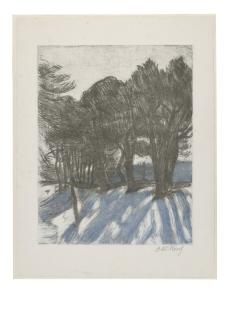
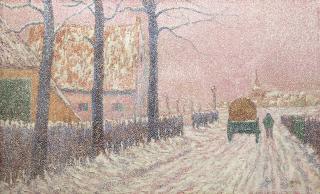










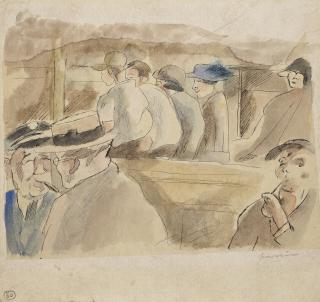





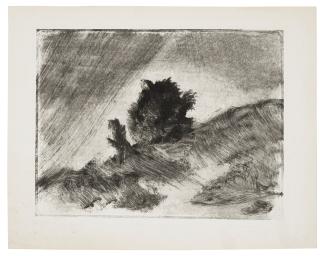








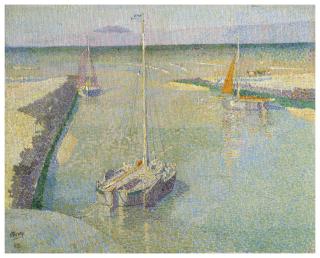









![Paul Gauguin - Noa Noa, voyage à Tahiti. [Munich, R. Piper, 1926]](/images/paul-gauguin_noa-noa-voyage-a-tahiti-munich-r-piper-1926_AID1174029_320x320.jpg)




